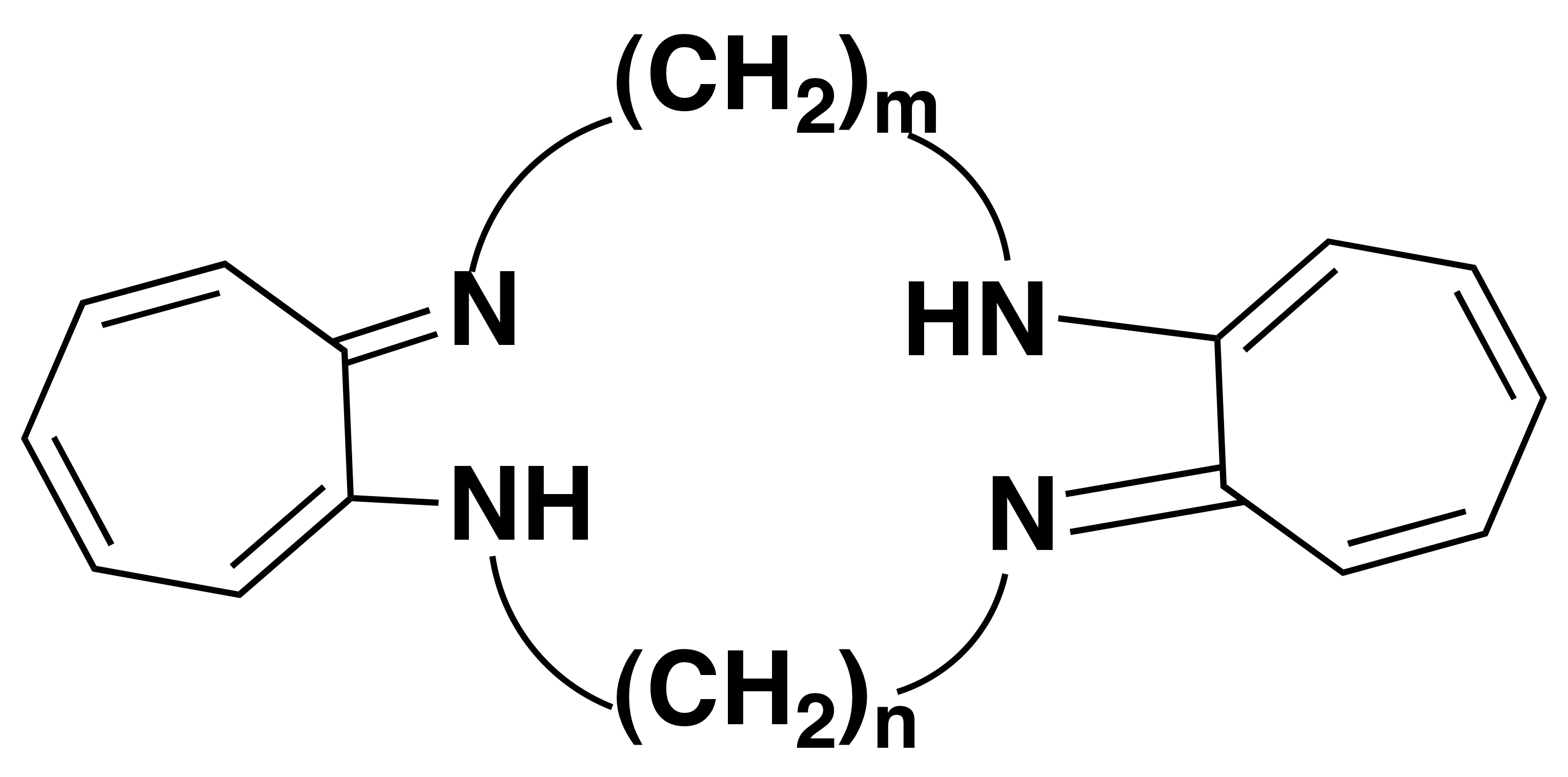|
Tropocoronand Ligand
The tropocoronand ligand (H2TC-m,n) is a macrocycle, macrocyclic ligand in which two aminotroponiminate rings are connected to one another via polymethylene linker chains of length m and n. Double deprotonation of the ligand yields a dianionic macrocylic species that is capable of binding divalent transition metal ions to form neutral complexes [M(TC-m,n)]. The 2-aminotroponeimine units are bridged by polymethylene linker chains with all four nitrogen atoms of the tropocoronand ligand bonded to a metal atom. Tropocoronand ligands (TC-m,n) 2− are known for a range of methylene bridges, m and n, in the arms connecting the two aminotroponiminate rings. They represent a new class of molecules with potential to be modified with a chiral moiety and applied to enantioselective reactions. Synthesis Symmetrical tropocoronands where m = n = 2 – 6 have been made in a four-step synthesis (Scheme 1) from tropolone. Either 2-tosyloxytropone (1) or 2-chlorotropone can be made from trop ... [...More Info...] [...Related Items...] OR: [Wikipedia] [Google] [Baidu] |
Macrocycle
Macrocycles are often described as molecules and ions containing a ring of twelve or more atoms. Classical examples include the crown ethers, calixarenes, porphyrins, and cyclodextrins. Macrocycles describe a large, mature area of chemistry. Synthesis The formation of macrocycles by ring-closure is called macrocylization. Pioneering work was reported for studies on terpenoid macrocycles. The central challenge to macrocyclization is that ring-closing reactions do not favor the formation of large rings. Instead, small rings or polymers tend to form. This kinetic problem can be addressed by using high-dilution reactions, whereby intramolecular processes are favored relative to polymerizations. Some macrocyclizations are favored using template reactions. Templates are ions, molecules, surfaces etc. that bind and pre-organize compounds, guiding them toward formation of a particular ring size. The crown ethers are often generated in the presence of an alkali metal cation, whic ... [...More Info...] [...Related Items...] OR: [Wikipedia] [Google] [Baidu] |
